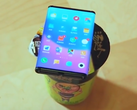Foldable phones may be the future, and 2019 may see the first wave of migration to this form-factor in earnest. However, the consumers involved in it are likely to be those who have a lot of cash to spend. The Huawei Mate X and Samsung Galaxy Fold, which were announced earlier this year, cost even more than their non-foldable flagship counterparts.
Speaking of Huawei, its CEO, Yu Chendong (also known as Richard) recently indicated that he expects the price of foldables to fall from their current epic highs to more reasonable altitudes in the future. However, a new repot in DigiTimes may have uncovered a point against this prediction. It indicates that devices with flexible displays are likely to remain highly-valued as they will be few in number.
The supplies of these phones are apparently being held back by a production issue that is unique to their product category. It concerns the volume of hinges available to the OEMs that need them. These parts, which have specifications and properties tailor-made for the demands of foldable phone use-cases, are in short supply. This problem was attributed to the extensive quality-control requirements associated with their manufacture.
DigiTimes asserts that its sources have told it these hinges, ironically enough, do not differ from OEM to OEM, or between the various folding modes the phones in question can adopt (for example, Google is rumored to be working on one that folds at more points compared to the by-now typical 'book' design). Therefore, the retail price of all upcoming bendy phones are likely to be uniform in terms of price-bracket.
On the other hand, the report also claims that some more companies, such as Jarllytec and Shin Zu Shing, are preparing to enter the market in order to leverage the opportunity presented by the current apparent foldable-phone-hinge shortage.





























